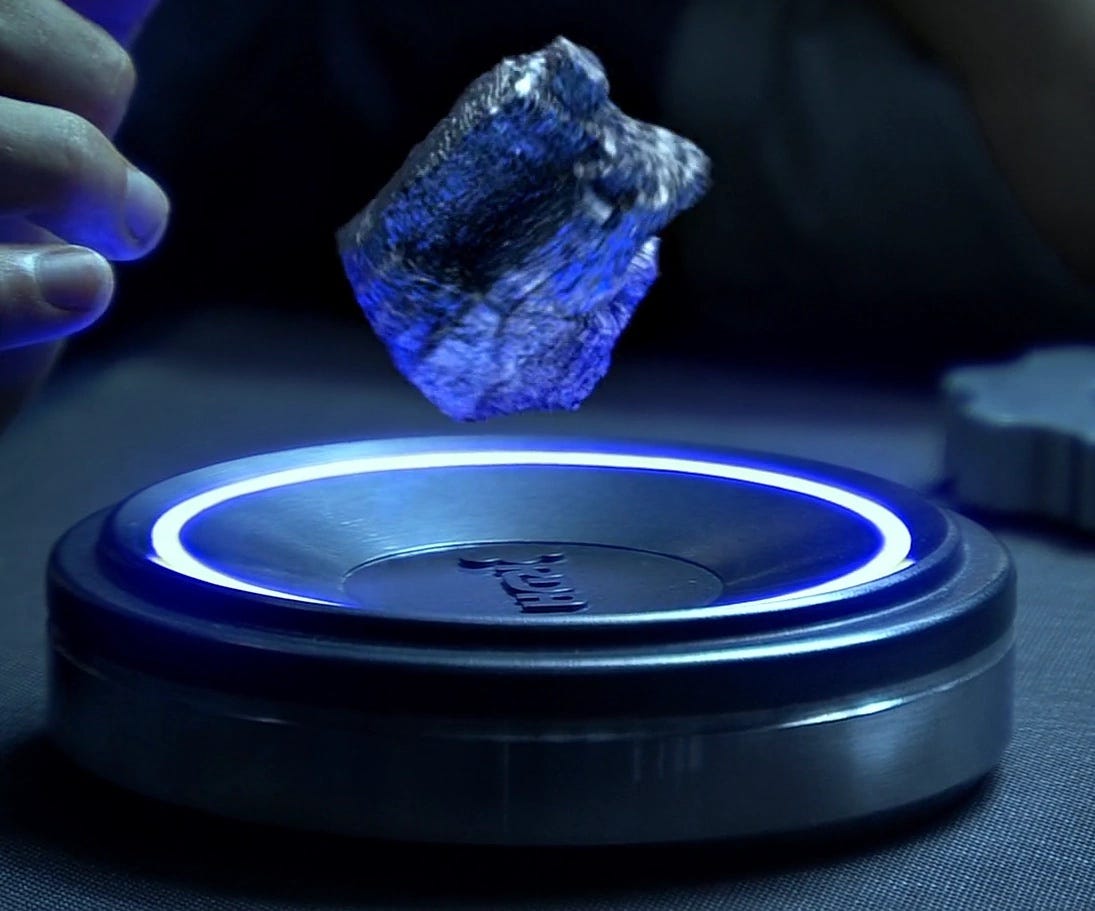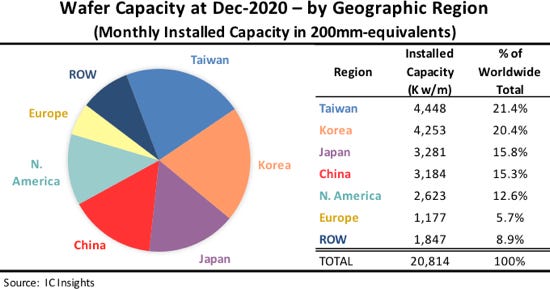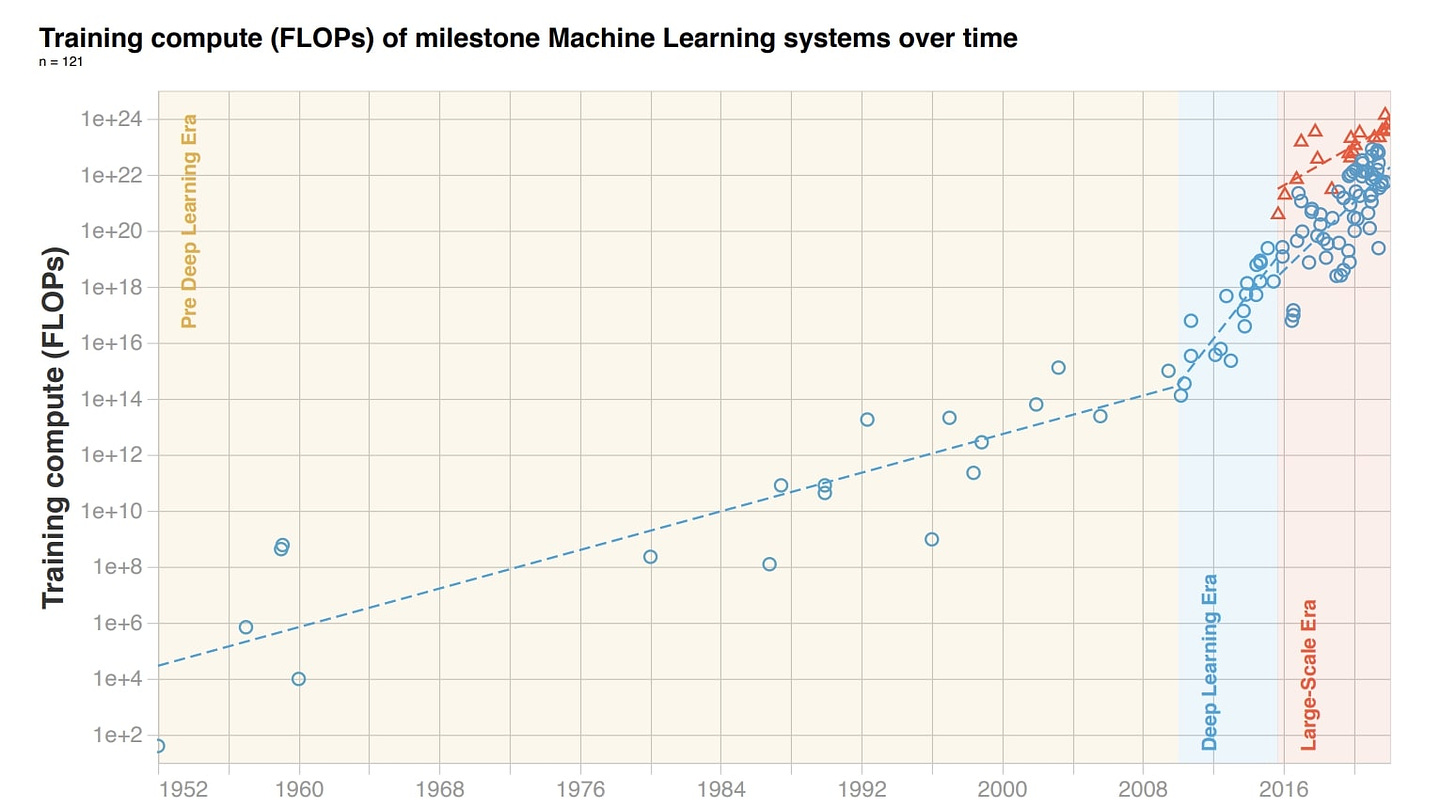Taiwan is Pandora, GPUs are unobtainium
(a 2022 pop-culture update to "Taiwan is Arrakis, semiconductors are the spice")
In James Cameron's 2009 epic Avatar, the science-fiction future is powered by a basically-magical mineral called "unobtainium," the largest deposit of which in the known universe is directly beneath the the home of the threatened Na'vi. This is ... or seemed, in 2009 ... a ridiculously implausible plot contrivance; but, amazingly, today it feels like prophecy. Taiwan is Pandora, and the cutting-edge GPUs used to train modern AI models are unobtainium.

It was Ben Hunt of Epsilon Theory who first advanced a similar sci-fi metaphor back in 2020: "Taiwan is now Arrakis." (For the three of you unfamiliar with Dune, Arrakis is the only planet on which "the spice," which uniquely enables faster-than-light space travel, is mined.) He meant semiconductors in general when he wrote:
There is no future where the United States can both maintain its existential national interests and allow the world’s principal supplier of semiconductors to come under the direct political control of China. And there is no future where China can both maintain its existential national interests and allow the world’s principal supplier of semiconductors to remain outside its direct political control [..] Taiwan is now Arrakis. It’s now the most important country on earth. And we WILL fight over it.
This was … sort of true? In December 2020, roughly 1/5 of the world’s semiconductor manufacturing capacity was in Taiwan, which is a lot but not a monopoly. Though a) semiconductor fabrication plants (aka “fabs”) or not interchangeable, and b) Taiwan still had more capacity than North America and Europe combined:

Much has happened in the two years since. The US passed the CHIPS Act, which will provide $52 billion in grants and investments, as well as a sizable investment tax credit, hoping to “re-shore” semiconductor manufacturing. They also enacted a sweeping and highly confrontational ban on exports of advanced semiconductors to China, and/or aid to China’s own semiconductor manufacturing industry:
the new export controls ban the export to China of cutting-edge chips, as well as chip design software, chip manufacturing equipment, and US-built components of manufacturing equipment. Not only do the prohibitions cover exports from American firms, but also apply to any company worldwide that uses US semiconductor technology — which would cover all the world’s leading chipmakers. The new rules also forbid US citizens, residents, and green-card holders from working in Chinese chip firms.
Oh yeah. And AI suddenly became the undisputed wavefront of technological advancement, widely acclaimed as the most important tech of the 21st century, one which will sooner-than-you-think become integral to all other technological — and then economic / geopolitical / military — advances and developments for the foreseeable future. Is this acclamation wrong? …Maybe. But what if it’s not?
Give me compute and I’ll give you the future
Training AI systems is incredibly “compute-intensive,” meaning it consumes enormous amounts of computing power … amounts which have been increasing exponentially over the last twenty years. Please note the logarithmic scale below. “Between 2012 and 2018, the amount of computing power used by record-breaking artificial intelligence models doubled every 3.4 months.” Other sources argue it’s more like six months… but that exponential trend does not exactly appear to be slowing down any time soon.

So: the world’s next most important technology requires increasingly gargantuan amounts of computing power … which means it doesn’t just need semiconductors; it needs the best, most powerful GPUs. (GPUs are processors designed to perform enormous numbers of calculations whose results don’t rely on one another, so they can all be done in parallel. Examples include intensive image processing, such as that called for by high-end real-time video games … or, it turns out, the large-scale matrix multiplications required to train AIs.)
Meanwhile, of the two world’s superpowers, the USA is desperately working to regain cutting-edge chip manufacturing capacity, but this will take many years, so to ensure its rival does not surpass it during that period, it has done all it can to hamstring Chinese chip manufacturing for as long as possible.
So over the next decade or so, most of the world’s best, most powerful semiconductors will continue to come from Taiwan Semiconductor Manufacturing Corporation, aka TSMC, whose semiconductor fabrication plants or “fabs” are, as you’d guess from the name, almost entirely in Taiwan.
TSMC do have competitors — well, a real competitor, Samsung — but few doubt they will rule the roost for years to come. The gold-standard off-the-shelf GPUs right now, Nvidia’s A100 and H100? Mostly manufactured by TSMC in Taiwan. Google’s “TPU” chips, custom-built for AI? They’re secretive, but it seems at least the first generation was manufactured by TSMC, and observers say their TPU v4 is “probably manufactured” by them as well.
Oh, and GPU manufacturing’s “Plan B,” Samsung? Their fabs, of course, are largely located in South Korea … a nation still technically at war with the spectacularly weird nuclear-armed dictatorial autarky to its north, its border a mere 25km/15m from bustling Seoul, and not that much further from China’s geographical doorstep than Taiwan itself. If this weren’t real life, it would be difficult to accept as fiction.
Moore’s second law and ASML
It’s worth noting how surreal, fantastic, and fantastically expensive cutting-edge chip fabrication has become. We all know Moore’s Law — loosely, “the number of transistors on a microchip doubles every two years” — but fewer are familiar with Moore’s Second Law, “the cost of a semiconductor chip fabrication plant doubles every four years.” As such:
Samsung announced a massive investment plan of around $355 billion that could help it overthrow TSMC as the world’s biggest chip fabrication firm. To counter those moves, TSMC has announced an investment of around $120 billion
Mind-numbing numbers. Much of that money, in turn, goes to a single company which provides semiconductor manufacturing tooling: Holland’s ASML — Europe’s most valuable technology company by far — which produces the photolithography machines which imprint unbelievably small transistors and circuitry on semiconductor wafers. The cutting edge right now is “3nm” … which, as a confusing aside, doesn’t actually mean anything is 3 nanometers across:
The term "3 nanometer" has no relation to any actual physical feature (such as gate length, metal pitch or gate pitch) of the transistors. According to the projections contained in the 2021 update of the International Roadmap for Devices and Systems published by IEEE Standards Association Industry Connection, a 3 nm node is expected to have a contacted gate pitch of 48 nanometers and a tightest metal pitch of 24 nanometers. However, in real world commercial practice, "3 nm" is used primarily as a marketing term by individual microchip manufacturers
But 48 nanometers is still insane. That is 500-1,000 atoms in width. You could stack two thousand 48nm transistors across the edge of a single sheet of paper. Step back and look at semiconductor manufacturing as a non-technical person, or even as a scientist transported here from the first half of the twentieth century, and it seems not so much engineering as wizardry, conducted by manipulating the world at the tiniest of scales.
Here there be geopolitical dragons
Well, it is this wizardry which empowers the burgeoning magic of modern AI; and by accident of history, economics, geopolitics, path dependency, and the (relative, but still profound) downfall of mighty Intel, essentially all of this wizardry takes place at gargantuan and enormously expensive facilities — part of an even more gargantuan manufacturing ecosystem, even harder to reproduce than individual fabs — on an island just off the coast of one of the world’s main superpowers.
Furthermore, that superpower considers this island of wizardry not a sovereign state but a rogue breakaway province which must inevitably be retaken and reintegrated, whether by slow assimilation or sudden conquest. That was the position of the Chinese government for many years even before Taiwan became the primary source of the “unobtainium spice” GPUs which power the mindblowing new technology that will probably define this century. May you live in interesting times, indeed.



